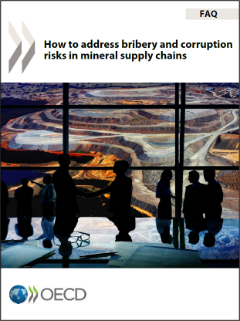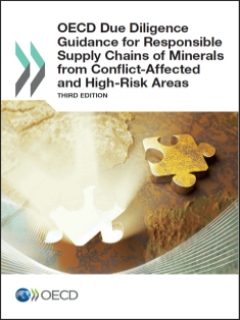FAQ: How to address bribery and corruption risks in mineral supply chains
-900x300.jpg)
|
Frequently Asked Questions How to address bribery and corruption risks in mineral supply chains
Watch the launch event on replay
The extractives sector has the potential to sustain livelihoods, foster local development through job creation and skills development, bring much needed tax revenue, and increase investment, particularly in conflict-affected and high-risk areas. However, the sector is prone to corruption risks. This OECD report provides practical answers to frequently asked questions on how companies can identify, prevent, mitigate and report on risks of contributing to bribery and corruption through their mineral sourcing. Corruption has a wide range of corrosive effects, depriving countries of revenues, stifling economic growth, distorting markets, undermining the rule of law, and enabling criminal networks and terrorism.
Beyond the economic impact, corruption in the mining sector causes harm to people and the environment, often as an enabler of serious human rights abuses and lack of enforcement of environmental and labour obligations The following FAQs do not represent new or additional guidance but aim to explain in simple terms the recommendations already set out in OECD Due Diligence Guidance and other OECD standards and best practice.
Read the report in English Français: Comment traiter les risques de corruption et de pots-de-vin dans les chaînes d’approvisionnement en minerais Español: Cómo abordar los riesgos de soborno y corrupción en las cadenas de suministro de minerales |
Published on 23 March 2021 |
|
The OECD Due Diligence Guidance for Responsible Mineral Supply Chains
The OECD Due Diligence Guidance for Responsible Supply Chains of Minerals from Conflict-Affected and High-Risk Areas clarifies how companies can identify and better manage risks throughout the entire mineral supply chain, from miners, local exporters and mineral processors to the manufacturing and brand-name companies that use these minerals in their products.
How does the Guidance apply to you? Consult the interactive Due Diligence Guidance!
|
|
Related Documents



